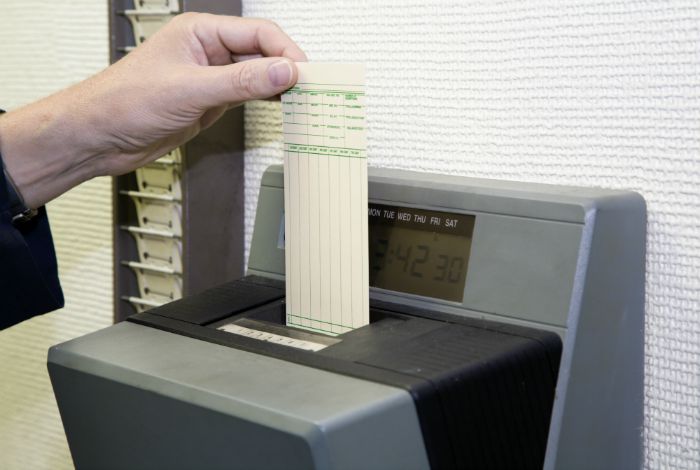If you don’t follow the time-and-pay rules under the Fair Labor Standards Act (FLSA), your business could face fines, lawsuits and other legal troubles. Here’s a list of the top six mistakes by business owners and what you can do to avoid them:
- Misclassifying employees as exempt. Your employees can be categorized as non-exempt or exempt.
- Non-exempt employees are typically paid on an hourly basis. Non-exempt employees must receive the federal minimum wage (or higher state minimums), and they’re entitled to overtime pay at one-and-a-half times the regular hourly rate for any hours over 40 in a workweek.
- Exempt employees are usually paid a salary and aren’t entitled to overtime pay. The two main criteria for exemption are the basis of pay (employee receives the same amount each week, regardless or quantity or quality of work) and satisfying the job duties tests for one of the “white-collar exemptions” (executive, administrative and professional).
To properly classify employees, always look beyond the job title or payment method, and consider the actual work performed. The Department of Labor updated these regulations in 2004, making the minimum salary for exempt employees $455 a week, or $23,660 annually. In 2016, the minimum was set to increase to $913 a week, or $47,476 annually, but that change is on hold indefinitely. And it’s unclear if there will be any increase under the new presidential administration.
- Not paying for unauthorized overtime. Again, you’re required to pay non-exempt employees overtime when they work more than 40 hours a week. Plus, the FLSA requires you to pay employees who work overtime even if they don’t ask permission. This could include work that takes place on site or at home, or when an employee decides to work through a lunch break. How can you protect yourself against unauthorized overtime? Start by having a clear policy against this. And to prove you’re serious, discipline employees who violate the policy (although you will still have to pay them.) A timekeeping system, such as TrackSmart Scheduling and TrackSmart Attendance, allows you to set overtime limits for full and part-time employees, which can help you prevent employees from working overtime unless approved by a supervisor.
- Automatic deductions for meal breaks. Do you automatically deduct time for meal breaks? This can be a red flag for the Department of Labor because it often means you’re not paying employees for the actual number of hours worked. There are some fairly tight regulations around meal breaks. They should be at least 30 minutes of uninterrupted non-working time. And if an employee works at all during the break — including taking a work-related call — you may be required to pay him/her for the whole meal break. How can you more effectively track this time? Using the break feature in TrackSmart Scheduling can assist you in tracking breaks according to FLSA guidelines.
- Carrying over work hours from one week to the next. You may think it’s nice to allow non-exempt employees to request comp time and work extra hours one week so they can take time off the next week. However, the DOL frowns on this. Each week should be treated as a single, independent 40-hour unit, where no hours are carried over. With very few exceptions, employees must be paid overtime for any hours they work over 40 during a given week. How can you avoid issues related to carrying over hours? TrackSmart Scheduling allows you to limit the number of hours an employee can be scheduled in a workweek, which helps you manage this particular time-and-pay issue.
- Errors in deducting salary for sick and personal days. This oversight relates to exempt employees only. You’re allowed to deduct a full day’s salary for employees who exceed the company’s time-off limits. However, you’re not allowed to deduct hours or partial days from their salary. That’s because salaried jobs are based on the overall value the employee provides in a given day, not the numbers of hours worked. Partial-day deductions are allowed from exempt employees’ pay in very limited circumstances. How can you avoid making this mistake? TrackSmart Attendance and TrackSmart Scheduling allow exempt employees to request time off by the hour, which can help you track the total number of hours taken a year against company limits.
- Thinking it’s the responsibility of your employees to manage their hours. It’s not. It is up to you as a business to track employee hours and maintain accurate records. The good news: You can choose the system that is most effective for you and your employees.
With a smart solution such a TrackSmart , you can be confident you’re meeting the latest record-keeping obligations — in addition to complying with the essential time-and-pay rules under the FLSA
.

